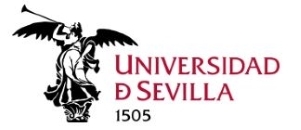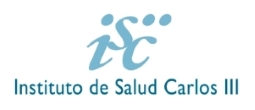Cód. SSPA: IBiS-C-11
Moved to the Institute in 2013, our research group is dedicated to addressing the challenges presented by sarcomas, both from a clinical perspective and in understanding their origins and biological mechanisms. Sarcomas are rare and highly diverse neoplasms, both biologically and clinically, and our work focuses on a wide variety of these tumours, with a special focus on Ewing sarcoma.
One of our main activities is the development of new experimental models in collaboration with the biobank, including cellular and animal models. We strive to address critical biological aspects of clinical relevance, such as the process of metastasis in sarcomas, which represents one of the major therapeutic challenges. In addition, we work intensively on the identification and validation of new therapeutic targets, with the aim of improving the survival of sarcoma patients. In this line, two years ago we launched an innovative project focused on adoptive immunotherapy for Ewing sarcoma.
Finally, our group is also dedicated to improving diagnostic tools for sarcomas, covering both solid tumours and the detection of circulating biomarkers. Our goal is to clinically validate these tools for their integration into the diagnostic routine of the National Health System.
Research Lines:
- SARCOMATRYX Project: New Therapies in Sarcomas.
The SARCOMATRYX project focuses on developing effective therapies for aggressive sarcomas, such as leiomyomas and undifferentiated pleomorphic sarcomas, using the FAP protein as a therapeutic target. The project aims to identify sarcoma subtypes suitable for treatment with OMTX705, an immunoconjugate that has demonstrated preclinical efficacy. The collaboration between ONCOMATRYX and FISEVI combines biomarker expertise and technical resources, with the aim of positively impacting the lives of patients and generating economic benefits through pharmaceutical licensing.
- CARITES Project: Adoptive Cell Therapy in Sarcomas
CARITES explores antigen-targeted CAR T-cell immunotherapy in Ewing sarcoma, a promising option that faces challenges due to antigen expression in normal tissues and an immunosuppressive microenvironment (iTME). The strategy involves the use of the Helicobacter pylori NAP protein to convert the iTME into a pro-inflammatory environment, thereby enhancing the efficacy of CAR T cells. This combination will be validated through in vitro and in vivo assays, with the aim of developing a safe and effective therapy for metastatic Ewing sarcoma.
- FIS Project PI23: Exploring Vulnerabilities in Ewing's Sarcoma
This project seeks to understand why some Ewing sarcoma patients respond differently to genotoxic agents and DNA damage response inhibitors. Using CRISPR screening and genomic variant analysis, the mechanisms of sensitivity to DNA damage will be investigated and the efficacy of combination therapies will be evaluated. The ultimate goal is to develop new therapies and biomarkers to identify the most suitable patients for these treatments.
- Molecular characterisation of Ewing sarcoma
This line of research focuses on the molecular characterisation of Ewing sarcoma, analysing genetic alterations and their impact on tumour progression. Advanced techniques, such as specific sequencing and RNA-seq analysis, are used to define transcriptional and methylation profiles, seeking to establish a pattern that will help in the understanding and treatment of this disease in young patients.
- Vasculogenic Mimicry and Tumour Plasticity
This line studies vasculogenic mimicry (VM), a mechanism of endothelial vessel-independent blood supply in tumours, associated with aggressiveness and metastasis. Recent research has shown that aberrant expression of VE-cadherin and its regulation by the kinase FAK and the repressor Kaiso are key in VM formation. New strategies to inhibit these processes are being explored to reduce the ability of tumours to develop MV.
- FIS Project PI22: Improving Molecular Diagnostics Based on Genomic Instability
This line focuses on the diagnosis of undifferentiated small round cell sarcomas (USRCS), using genomic instability as a tool for precision medicine. The aim is to identify genomic structural variants (SVs) that impact on the clinical manifestations of the disease, using advanced cytogenetic technologies and RNA-seq to evaluate the transcriptomic consequences of these alterations. The aim is to improve the identification of patients at risk of relapse and optimise their treatment.















